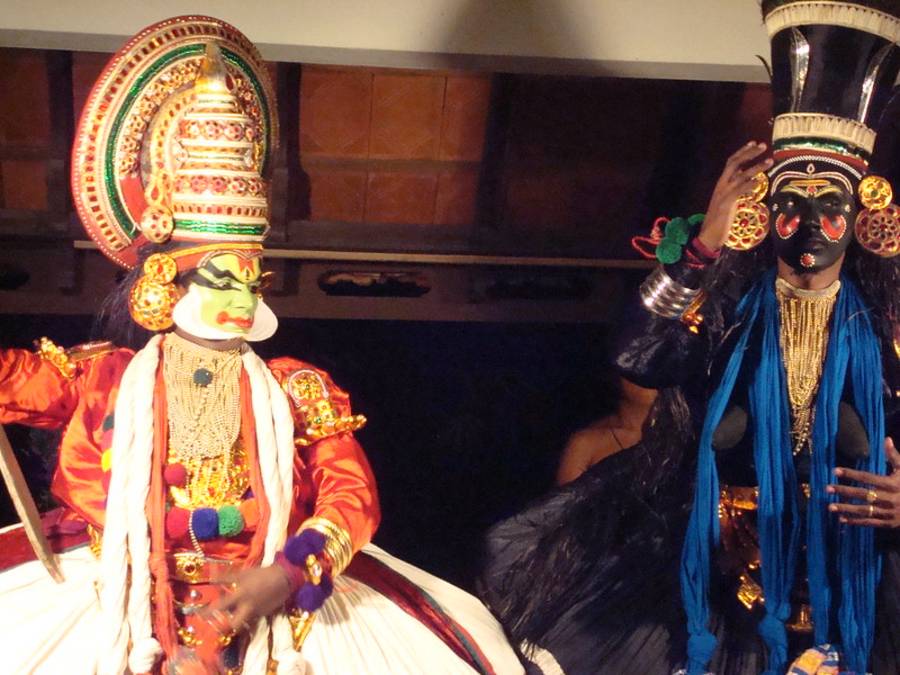Kathakali, Traditional Dance of Kerala
I had convinced myself not to see the Kathakali dance program scheduled upon my arrival in Fort Kochi. The drive into this city was long, my time was very short, and I had a list chock full of sightseeing to work through. No matter what excuse I gave, my driver, Selvam was not going to let me miss this show. Fortunately, his persistence convinced me to give it a try with the agreement I might be coming out early.
Kathakali is based on Hinduism and is a highly charged and powerful drama that combines devotion and physical virtuosity with symbolic storytelling, to produce one of the most impressive and vibrant forms of theatre in the world.

Although the show was scheduled to start at 6:30 PM, the performers apply their customary make-up on the same, intimate-sized stage, where the program takes place. Guests begin arriving as early as 5, when the doors open, to find the best seats. There are no rules here; guests may approach the stage to snap as many photos they desire with very little attention paid by the performers. Once the make-up is applied by the individual performers, a paper which completes the appearance of dancers wearing a mask is applied by another artist. Together with the individual performers, this artist works (with very few words) in an efficient manner to apply specially cut paper around the make-up.
The show begins with a fast-moving, informative introduction to Kathakali; Specifically regarding the facial expressions and their meaning. Wearing two hats, the speaker also makes up one of the musicians who have moved on stage by now. The background is set, the house lights fade, and the show begins. An hour later, like clockwork, the audience applauds and we’re free to leave.
Would I return to see this performance again? Absolutely! It didn’t hurt that Selvam had called ahead requesting two front row seats for my travel partner and me. This gesture, along with my earlier reluctance to attend, began to feel like a Dr. Aziz– Passage to India moment. I narrowly missed insulting my driver. To see a dance performance so seeped in Indian tradition is not to be looked upon as a tourist trap as much as an opportunity to understand just one more thin layer of the onion that is India.
A suggestion for those who will also take in this show: Wear lightweight clothing and carry in a bottle of water or some refreshment. The theater is tight in size. Even as the A/C blew, the internal temperature rose higher and higher as the performance went on and on. Outside the theater is a small juice bar serving up delicious fruit smoothies along with many other cold drinks. Drinks are allowed in the theater.



